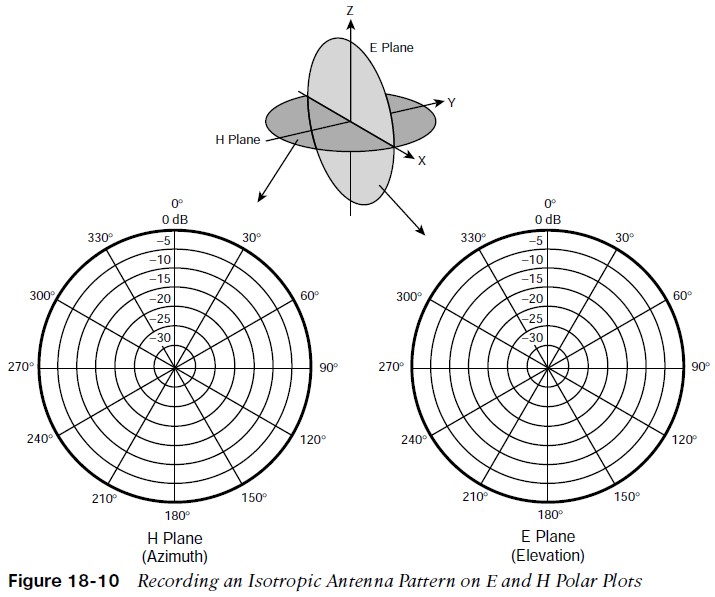
About Lesson
WLAN Topologies
Autonomous, cloud-based, centralized, embedded, Mobility Express architectures.
AP Modes
- Autonomous – self-sufficient, standalone, self-contained, offering one or more standalone BSSs.
- An extension of a switched network, connecting wireless SSIDs to wired VLANs at the access layer.
- Lightweight – support several different network topologies, depending on where WLCs located
Autonomous Topology

- Autonomous APs present two wLANs with SSIDs wlan100 & wlan200.
- The APs also forward traffic between wLANs and two wired VLAN100 and 200.
- Configured with a management IP to enable remote management.
Autonomous Topology
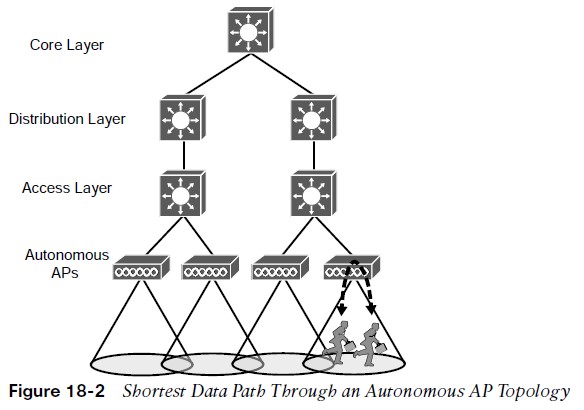
- Offer the same SSID on many Aps -> wireless clients associate with that SSID in any location or while roaming between any two APs.
- You may want to extend the VLAN & IP subnet to each and every AP.
- Clients do not have to request a new IP for each new association.
- A short and simple path for data to travel between the wireless and wired networks.
- Two wireless users associated to the same autonomous AP. One can reach the other through the AP, without having to pass up into the wired network.
Lightweight Topologies
- A LAP has to join a WLC to become fully functional (split-MAC).
- AP handles most of the realtime 802.11 processes.
- WLC performs the management functions.
- An AP and a WLC joined by a logical pair of CAPWAP tunnels that extend through the wired infrastructure.
- Control and data traffic transported across the tunnels.
- Each AP has its own CAPWAP tunnel to the WLC.

Lightweight AP Topologies – Centralized
- A WLC support up to 6000 APs.
- The L3 boundary for each data VLAN handled at or near the WLC, so the VLANs need only exist at that location, indicated by the shaded link.
- Each AP still has its own unique management IP, but it connects to a switch via an access link rather than a trunk link.
- Even if multiple VLANs and WLANs involved, they carried over the same CAPWAP tunnel to and from the AP.
- Therefore, the AP needs only a single IP address to terminate the tunnel.
- As a wireless user moves through the coverage areas of the four APs, he might associate with many different APs. Because all of the APs joined to a single WLC, WLC can easily maintain the user’s connectivity to all other areas as he moves around.
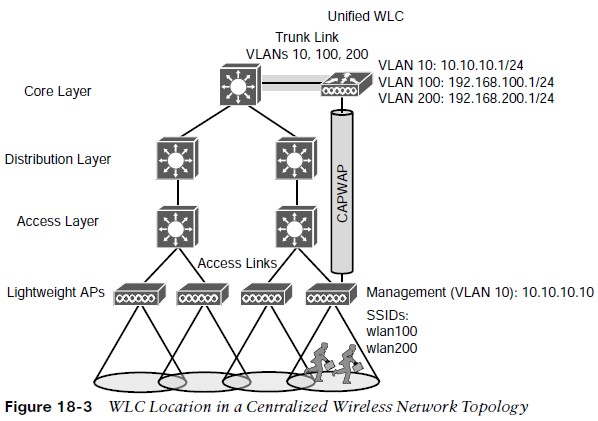
LAP Topologies – Centralized
- The traffic from one client must pass through the AP, encapsulated in the CAPWAP tunnel. Then travel up to reach the WLC, where it unencapsulated and examined. The process then reverses.
- The length of the tunnel path can be a great concern for LAPs.
- The RTT between an AP & WLC should be less than 100 ms so that wireless communication maintained in near real time.
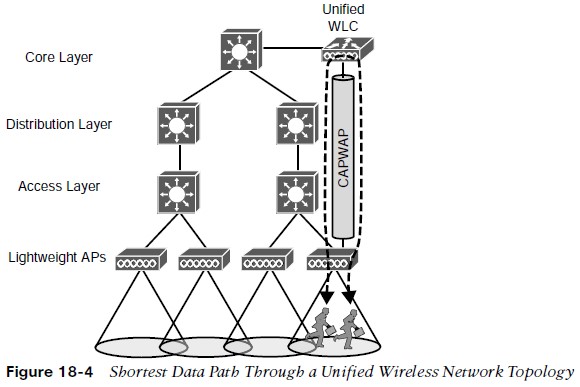
If the path has more latency than that, the APs may disconnect and find another, more responsive WLC.
Lightweight AP – Embedded Wireless Topology
- CAPWAP tunnel becomes really short.
- Cost-effective because the same switching platform used for both wired & wireless.
- Supports up to 200 APs.
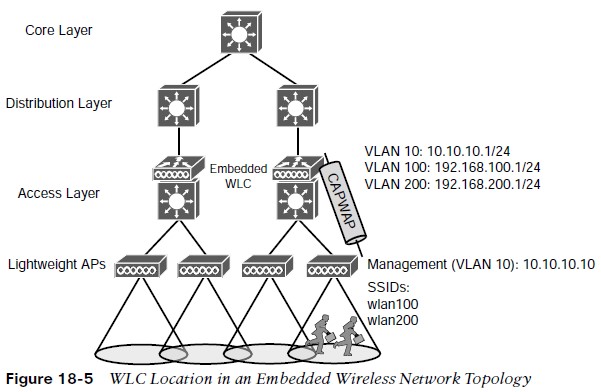
LAP – Embedded Wireless Topology
- Traffic from a wireless user to a central resource such as DC or the internet travels through the CAPWAP tunnel, unencapsulated at the access layer switch (WLC), travels normally up through the rest of the network layers.
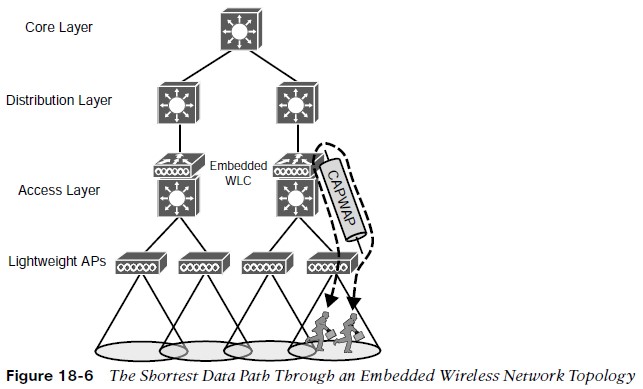
the traffic path from one user to another must pass through an AP, the access switch (and WLC), and back down through the AP.
LAP Topologies – Mobility Express Network Topology
- A fully functional AP also runs software that acts as a WLC.
- Useful in small scale environments,.
- The AP that hosts the WLC forms a CAPWAP tunnel with the WLC, as do any other APs at the same location.
- A Mobility Express WLC support up to 100 APs.
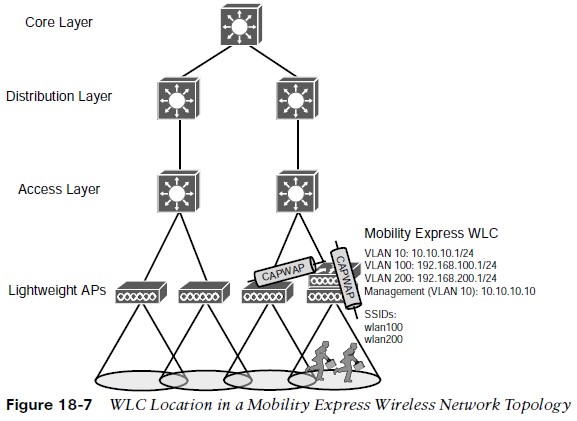
Other useful information:
- Full ENCOR Course
- CCNP Enterprise Certificate Information
- 350-401 ENCOR Exam Questions and Solutions
- 350-401 ENCOR Exam Topics
Join the conversation